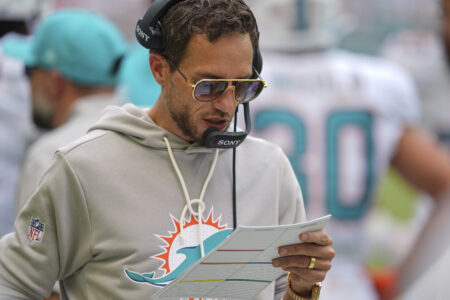Boat Winterizing — Some Rules Of The Road
The non-stop three-man and four-man limit catches of Lake Erie walleye make it harder for us to consider preparing our boats and fishing gear for storage this year.
What a year.
Mother Nature does have a way of catching up with us though, and so with October just around the corner, it’s not a bad time to start preparing for boat storage.
Winterizing fishing boats and fishing gear in the northern United States and Canada is absolutely essential. If we don’t, freezing temperatures, condensation and corrosion can cause expensive damage, and shorten the life of our equipment. Many of us, me included, make a checklist and it pays to keep us on track without forgetting anything. It starts with the main outboard motor, gas powered trolling motor, electric trolling motor (bow motor), batteries, fuel tank, digital electronics and, finally, the fishing gear.
Let’s start with the fuel tanks. First, top off tanks. A full tank reduces condensation, which can cause water contamination. Add stabilizer, use a marine-grade fuel stabilizer for ethanol-blended gas, then run the engine long enough to circulate the treated fuel through the fuel lines and carburetors/injectors. This will also prevent varnish, gum, rust and corrosion in fuel systems. Some brands have a “safe storage” rating of 12-24 months. Read the label. One little bottle will usually treat a lot of gallons. Fuel stabilizers are compatible with both two- and four-stroke outboards. Common brands include STA-BIL which is very commonly recommended, including the marine/ethanol versions; Star-Tron, this brand particularly for long-storage needs, it is enzyme-based and research will show good user feedback. Then there is also Quicksilver “QuickStor” the OEM recommended brand for Mercury motors. “Yamalube” is recommended for Yamaha engines.
With portable gas tanks, add stabilizer, run the trolling motor with earmuffs on, then store the portable tank in a ventilated, cool location away from ignition sources.
With the outboard motors, some folks use fogging oil to spray into the intake or directly into the cylinders. I was taught by a marine mechanic many moons ago to remove the spark plugs and spray a short squirt of lubricating oil into each cylinder and then crank the engine once to lube the cylinder walls, then put the plugs back in. Next, with each outboard motor, we need to address the lower unit by removing the drain plug and refilling with the designated gearcase oil for the motor brand. Any water in the oil can freeze, expand and crack the housing. With grease fittings and moving parts, simply apply marine grease to the prop shaft, steering pivots, and linkages. Then store the motor in a fully vertical position so water drains completely.
With the electric trolling motor, disconnect from power first. Then take the time to remove the prop and check for fishing line wrapped around the shaft. Yep, it happens. What are friends for (they didn’t tell you?). Clean any electrical plug contacts and wipe down the electrical connections with dielectric grease to prevent corrosion. Store indoors if possible, keeping the motor in a dry, climate-controlled space extends life.
Next are the batteries (starting and deep cycle). Fully charge them, as a fully charged battery is less likely to freeze. Clean the terminals, coat with dielectric grease after cleaning. Remove them from the boat and store in a cool, but not freezing location (garage, basement). Then add a maintenance charging smart trickle charger/maintainer to keep them topped up over the winter.
With fishing gear (rods, reels, tackle), it’s common sense. Rinse rods/reels with fresh water and dry thoroughly. Clean and dry, remove dirt and moisture to prevent corrosion. Back off the drag systems on the reels, and oil bearings/gears lightly. With fishing line, wait until spring to replace with new line. With tackle, dry out completely to avoid rust.
Next is our digital electronics (fish finders, GPS, sonar, vhf radio). These, it’s best to remove from the boat and store indoors to protect from freeze/thaw cycles. Protect connectors, use dielectric grease or protective caps on plugs and terminals. Winter is a good time to update software and firmware. Safe storage, keep in a padded, dry case to avoid condensation damage.
Last step — cover the boat with a breathable cover to keep snow and moisture out but allow ventilation. If storing outdoors, consider shrink-wrapping for maximum protection.
Gotta love the outdoors.
CALENDAR
Sept. 20: Steelhead Angler Event, Hairy Trout Fall Run Kickoff, Buffalo River Grove, 2-7 p.m., 2299 Clinton St., West Seneca; $15 entry, visit The Hairy Trout (barber shop and tackle shop), 3891 Seneca St., for tickets.
Sept. 20: 1-Day Walleye Derby, Lake Erie, $45 entry, Southtowns Walleye, Paul Sanchez, 716-228-6520
Sept. 20: NYS Hunter Education, 8 a.m. to 5 p.m., Falconer Rod/Gun Club, Rod & Gun Club Road, Falconer; Visit: https://dec.ny.gov.
Sept. 20: NYS Hunter Education, 8 a.m. to 5 p.m., lunch provided, Bear Lake Rod & Gun, 4391 Cassadaga-Stockton Road, Stockton; Visit: https://dec.ny.gov. Info: Rudy Abersold, 716-397-9717.
Sept. 20: Reinstein Woods 25th annual Fall Festival, 10 a.m. to 4 p.m., Celebrate all things nature. Crafts for kids, live animals, hands-on activities, food, and more. No registration required; 93 Honorine Drive, Depew, 716-683-5959.
Sept. 20: 50-Bird Youth Trap Shoot, Attica Rod & Gun Club, $10, 2125 Route 98, Varysburg, Info: Andrea Barrett, 716-253-0890.
Sept. 21: NYS Bowhunter Education Course, Northern Chautauqua Con Club, 9:30 a.m. to 5 p.m., free, Visit: https://dec.ny.gov — must have homework completed; contact Gary: 716-366-3397.
Sept. 21: Blood Tracking Seminar, Deer Search of WNY, at Hawkeye Bowmen, 13300 Clinton St., Alden, 2-4 p.m. Open to all hunters. Free.



